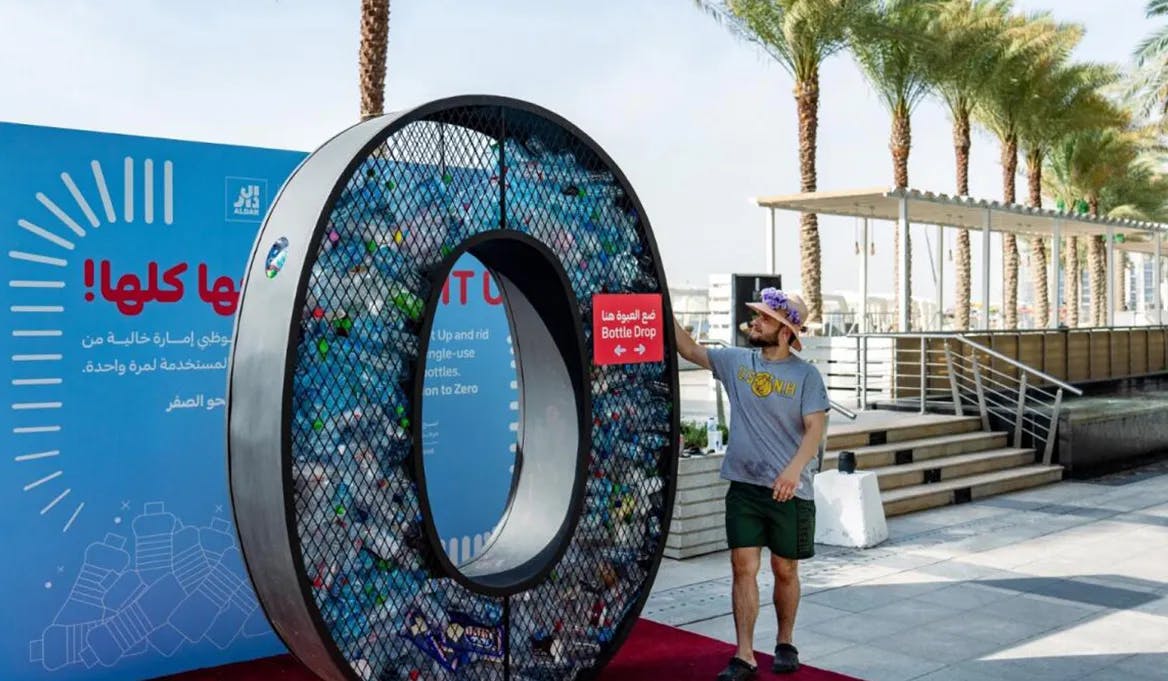
Eco-Friendly Properties: Simple Tips for Sustainable Living
Sep 26, 2024
8 minutes read
In an era of increasing environmental awareness, the concept of Eco-Friendly Properties in Dubai has gained significant traction. Sustainable living isn't just a trend; it's a necessary shift towards a more responsible and harmonious existence with our planet. This blog post explores practical and effective ways to transform your living space into an eco-friendly haven, contributing to a greener future while often saving money in the process.
Eco-Friendly Properties: The Foundation of Sustainable Living in Dubai

Understanding Eco-Friendly Properties
Eco-friendly properties in Dubai are designed and maintained with environmental sustainability in mind. These homes minimize their carbon footprint, conserve resources, and often incorporate renewable energy sources. The goal is to create a living space that's not only comfortable for inhabitants but also gentle on the planet. Eco-friendly properties often feature energy-efficient appliances, sustainable building materials, and innovative designs that maximize natural light and ventilation.
The Triple Bottom Line: People, Planet, Profit
Adopting sustainable practices in your home addresses the triple bottom line:
1. People: Creating healthier living environments with improved air quality and reduced exposure to harmful chemicals.
2. Planet: Reducing environmental impact through decreased energy consumption, water usage, and waste production.
3. Profit: Saving money through efficiency and conservation, often resulting in lower utility bills and reduced maintenance costs.
By focusing on these aspects, we can make meaningful changes that benefit both our immediate surroundings and the global ecosystem. The interconnectedness of these elements underscores the holistic nature of sustainable living.
Energy Efficiency: The Cornerstone of Eco-Friendly Living

Image Credit: www.business.hsbc.ae
Harnessing the Power of the Sun
Solar energy is a cornerstone of sustainable living. Installing solar panels can significantly reduce your reliance on grid electricity, lowering both your carbon footprint and energy bills. While the initial investment may seem substantial, the long-term savings and environmental benefits make it a worthwhile consideration. Modern solar systems are more efficient and aesthetically pleasing than ever before, with options like solar tiles that blend seamlessly with traditional roofing materials.
Lighting the Way to Sustainability
Switching to LED bulbs is a simple yet effective step towards energy efficiency. LEDs consume up to 90% less energy than traditional incandescent bulbs and last significantly longer. This change not only reduces your energy consumption but also cuts down on frequent bulb replacements. Consider smart LED bulbs that can be controlled via smartphone apps or voice commands, allowing for even greater customization and efficiency.
Smart Home Technology for Optimal Efficiency
Implementing smart home technology can dramatically improve your property's energy efficiency. Smart thermostats, for instance, learn your habits and adjust heating and cooling accordingly, potentially saving up to 15% on your energy bills. Additionally, smart power strips can eliminate phantom energy usage from devices in standby mode. Other smart home features like automated blinds can help regulate indoor temperature, reducing the load on your HVAC system.
Water Conservation: Every Drop Counts

Image Credit: blackfeetclimatechange.com
Low-Flow Fixtures: Small Changes, Big Impact
Installing low-flow fixtures in bathrooms and kitchens can significantly reduce water consumption. Low-flow showerheads, faucet aerators, and dual-flush toilets can cut water usage by up to 50% without compromising functionality. Look for WaterSense-labeled products, which are certified to be at least 20% more efficient than average products in the same category.
Rainwater Harvesting: Nature's Gift
Implementing a rainwater harvesting system allows you to collect and use rainwater for non-potable purposes like watering gardens or flushing toilets. This reduces your reliance on treated water and helps manage stormwater runoff, benefiting both your wallet and local ecosystems. Modern rainwater harvesting systems can be integrated with smart home technology, allowing for automated irrigation based on weather forecasts and soil moisture levels.
Xeriscaping: Beautiful and Water-Wise
What is Xeriscaping?
Xeriscaping is a landscaping method designed to reduce or eliminate the need for irrigation by utilizing drought-resistant plants and efficient water management techniques. This eco-friendly approach promotes sustainability while enhancing aesthetic appeal in arid climates.
Adopting xeriscaping principles in your landscaping can dramatically reduce outdoor water usage. This approach uses drought-resistant plants native to your region, reducing the need for irrigation while creating a beautiful, low-maintenance garden. When integrated into Eco-Friendly Properties, xeriscaping goes beyond plant selection; it involves thoughtful landscape design, soil improvement, and efficient irrigation methods like drip systems or soaker hoses.
Waste Reduction: Towards a Zero-Waste Lifestyle

Image Credit: www.khaleejtimes.com
Composting: Turning Waste into Resource
Implementing a composting system transforms kitchen scraps and yard waste into nutrient-rich soil for your garden. This not only reduces the amount of waste sent to landfills but also provides a free, high-quality fertilizer for your plants. Consider different composting methods like traditional backyard composting, vermicomposting (using worms), or even indoor countertop composters for apartment dwellers.
Recycling: Beyond the Basics
While recycling is commonplace, many households aren't maximizing its potential. Educate yourself on local recycling guidelines and set up a comprehensive recycling station in your home. Consider recycling less common items like electronics, batteries, and textiles to further reduce your waste output. Look into specialized recycling programs for items like cosmetic containers or contact lenses, which are often overlooked but can contribute significantly to waste reduction.
Embracing the Circular Economy
Adopt a mindset of reuse and repair rather than replace. When purchasing items, consider their longevity and potential for reuse or recycling. Participate in local sharing economies or buy second-hand to reduce the demand for new products and their associated environmental costs. Explore the concept of "upcycling" – repurposing items creatively to give them new life and function.
Sustainable Materials: Building a Greener Future

Image Credit: wired.me
Eco-Friendly Building Materials
When renovating or building, opt for sustainable materials. Bamboo flooring, recycled glass countertops, and reclaimed wood are excellent alternatives to traditional materials. These choices not only reduce environmental impact but often add unique character to your home. Consider innovative materials like mycelium (fungal) insulation or hempcrete (made from a mix of hemp fibers, lime, and water), which offer excellent performance with a fraction of the environmental impact of conventional options.
Non-Toxic Finishes and Paints
Choose low-VOC or zero-VOC paints and finishes to improve indoor air quality and reduce harmful emissions. These products have come a long way in recent years, offering performance comparable to traditional options without negative health and environmental impacts. Look for natural paint options made from ingredients like clay, milk protein, or plant-based oils for an even more eco-friendly approach.
Insulation: The Hidden Hero
Proper insulation is crucial for energy efficiency. Consider eco-friendly options like recycled denim, sheep's wool, or cellulose insulation. These materials offer excellent thermal performance while being sustainable and often healthier alternatives to fiberglass insulation. Don't forget about air sealing – addressing drafts and leaks can significantly improve your home's energy efficiency.
Green Transportation: Extending Sustainability Beyond Your Doorstep

Image Credit: constructionweekonline.com
Electric Vehicle Infrastructure
If possible, install an electric vehicle charging station at your property. This encourages the use of electric vehicles, reducing carbon emissions from transportation. Many regions offer incentives for EV charger installation, making it a wise investment for the future. Consider solar-powered charging stations to further reduce your carbon footprint.
Bike-Friendly Features
Incorporate bike storage and maintenance areas into your property design. Encouraging cycling for short trips can significantly reduce your carbon footprint while promoting a healthier lifestyle. Install secure bike racks, create dedicated bike paths on your property, or even set up a small repair station to make cycling more convenient and appealing.
Indoor Air Quality: The Often Overlooked Aspect of Eco-Friendly Living

Image Credit: www.sheridanuae.com
Plants: Nature's Air Purifiers
Incorporate indoor plants known for their air-purifying qualities. Species like spider plants, peace lilies, and snake plants not only add aesthetic value but also help remove common indoor pollutants, improving air quality naturally. Consider creating a living wall or vertical garden to maximize the air-purifying benefits while enhancing the visual appeal of your Eco-Friendly Properties. This integration of greenery aligns perfectly with sustainable living principles and enhances the overall health of your indoor environment.
Natural Ventilation Strategies
Design or modify your home to maximize natural ventilation. Proper placement of windows and vents can reduce the need for air conditioning, improving energy efficiency while ensuring a steady supply of fresh air. Explore passive cooling techniques like thermal chimneys or solar chimneys, which use natural convection to draw hot air out of the home.
Community Engagement: Amplifying Your Impact

Image Credit: eatpickl.com
Sharing Knowledge and Resources
Engage with your community to share sustainable living practices. Organize workshops, participate in local environmental initiatives, or start a neighborhood composting program. Collective action amplifies individual efforts, creating a more significant positive impact. Consider starting a community garden or tool-sharing program to promote sustainable practices and foster community connections.
Supporting Local and Sustainable Businesses
Prioritize local, sustainable businesses for your household needs. This reduces transportation emissions, supports the local economy, and often results in fresher, more sustainable products. Explore community-supported agriculture (CSA) programs or farmers' markets to source local, seasonal produce and support sustainable farming practices.
Small Steps, Big Impact: Embrace the Journey towards a Sustainable Future

Transforming your Dubai property into an eco-friendly haven is a gradual process, but every small step matters. By adopting sustainable living practices, you contribute to a global movement for a healthier planet. Stay informed about eco-friendly technologies and continually seek ways to minimize your environmental impact. Your home can be a powerful statement of your commitment to sustainability, inspiring others to join the cause. Ultimately, embracing these principles not only benefits the environment but also enhances your quality of life, fostering a healthier and more efficient living space connected to the natural world.
Take Action towards Eco-Friendly Living
As you embark on your journey to transform your Dubai property into an eco-friendly haven, consider how these sustainable practices can enhance your real estate value. Eco-friendly properties are increasingly sought after in the market, appealing to environmentally-conscious buyers and renters alike.
Get Started Today!
Explore Listings:Browse our eco-friendly Dubai property listings to find homes that embody sustainable living principles.



